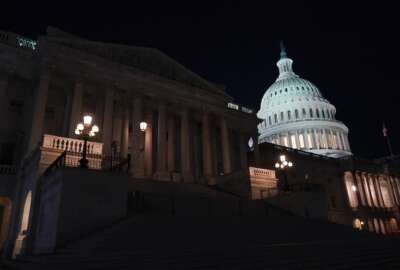The IRS is facing substantial cuts to funds meant to rebuild its workforce and modernize its legacy IT systems over the next decade, as part of a deal to raise the debt ceiling and avoid a first-ever government default.
The White House and congressional Republicans reached a final agreement Sunday night to limit federal spending over the next two fiscal years, in exchange for raising the debt limit through January 2025.
Congress still needs to pass the spending plan by June 5 to avoid a federal default. That’s about how long the Treasury Department estimates it still has enough revenue on hand to make scheduled payments, without having to borrow additional funds.
The spending deal struck by the Biden administration and House Speaker Kevin McCarthy (R-Calif.) would keep non-defense discretionary spending roughly flat in fiscal 2024, and would cap growth in non-defense spending to 1% in FY 2025.
White House officials told reporters on Sunday night that the spending deal, if approved by Congress, would amount to a full-year continuing resolution for non-defense discretionary spending in fiscal 2024. They also said proposed cuts to IRS spending wouldn’t require the IRS to scale back its short-term modernization plans.
“This reflects the fact that we are in a divided government, where we were obviously going to fight hard for higher non-defense funding for a range of priorities that are critical to the president’s economic and broad agenda,” a White House official said. “We will continue to do that. But in a divided government, we’re not going to get the kinds of [non-defense discretionary] increases that we would hope to get.”
White House officials also said agencies fare better under this deal than an earlier plan by House Republicans to cap next year’s non-defense discretionary spending at FY 2022 levels.
The Biden administration estimated that plan would have cut non-defense discretionary spending by 22% in FY 2024, and would force agencies to make cuts to the federal workforce.
But the IRS stands to lose the most, out of all agencies, in this new, bipartisan agreement.
The Biden administration and Republican lawmakers are prepared to cut $20 billion from funds the agency received in the Inflation Reduction Act — about a quarter of the nearly $80 billion received to spend over the next decade.
The IRS recently released its Strategic Operating Plan, outlining how it expected to spend its modernization funds. The agency, as part of its plan, expects to make 20,000 new hires by the end of fiscal 2024.
IRS Commissioner Danny Werfel told the Senate Finance Committee last month that plans to zero out IRA funds would unravel IRS plans to improve taxpayer services.
“If you repeal the Inflation Reduction Act, you eviscerate our ability to fix the problems that we’ve had historically,” Werfel said in an April 27 hearing.
The agency spent about 1% of available IRA funds this year to increase its level of service for taxpayers calling for help this filing season. Werfel also told lawmakers the IRS is working on a longer-term hiring plan that would outline workforce growth over the next decade.
The White House told reporters that the deal would repurpose $10 billion of the IRS funding as part of the FY 2024 appropriations process. Congress would repurpose another $10 billion in FY 2025 for other non-defense priorities.
White House officials, however, said the IRS can continue to spend the roughly $60 billion of multi-year IRA funds.
“It’s not as if you’re taking 2024 or 2025 money from the IRS — we don’t believe in the near term that anything will need to change. Obviously, that’s something that will play out over the next year or two,” an official said.
White House officials said they don’t expect the IRS’s short-term modernization plans will change, and that the IRS may come back to Congress for additional multi-year funds by the end of the decade.
“It might be the case that, you know, in six, seven, eight years, there would be a need to come back and ask for more IRS funding, just as there was going to be a need to do that after the 10-year window anyway,” an official said. “So we don’t think it’ll fundamentally change what the IRS does over the course of the next few years.”
The debt ceiling agreement also fully funds the Biden administration’s budget request for veteran medical care at the Department of Veterans Affairs.
The deal fully funds the VA’s Toxic Exposure Fund (TEF) at the levels proposed by the Biden administration over the next two years. The TEF, which supports the VA’s implementation of the toxic-exposure PACT Act, would receive $20 billion in FY 2024 and $21.5 billion in FY 2025.
The debt ceiling agreement would also rescind about $30 billion in unspent COVID-19 emergency funds, but would keep $5 billion in federal spending intact to develop next-generation COVID-19 vaccines.
The White House doesn’t expect the final agreement will include rescinding all remaining COVID-19 or American Rescue Plan funds, and that those sources of funding will remain for housing assistance, the Indian Health Service and the Bureau of Indian Education, as well as for veterans’ medical care.
VA officials told lawmakers last week the agency expects to spend more than $2 billion in remaining funds from the American Rescue Plan by the end of the year.
Copyright
© 2024 Federal News Network. All rights reserved. This website is not intended for users located within the European Economic Area.
